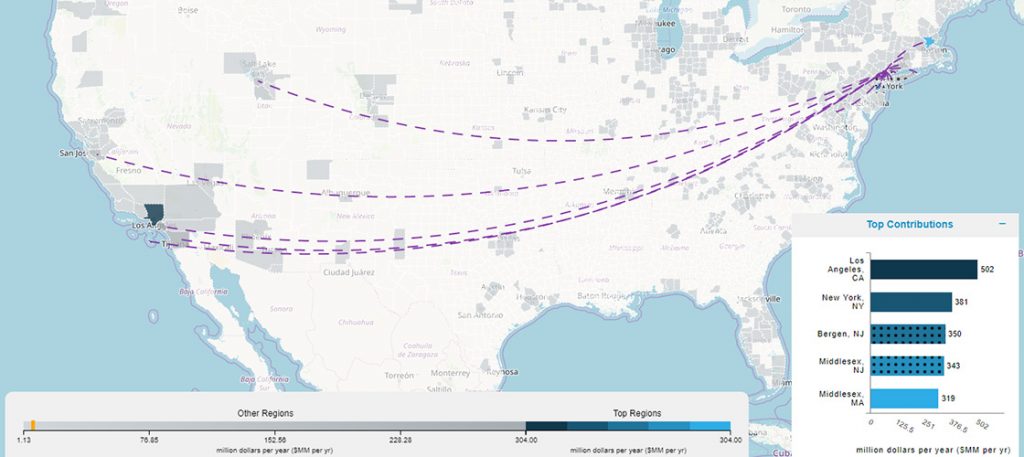March 26, 2020 – For immediate release
Empty Shelves Press Release PDF HERE
“The U.S. supply chains are proving resilient in the midst of the COVID-19 pandemic, though there are points of concern that decision-makers, emergency managers and the public should consider,” said Dr. Benjamin Ruddell, Director of the National Science Foundation-funded FEWSION Project led out of Northern Arizona University (https://fewsion.us/)

FEWSION, which uses comprehensive data to map out domestic supply chains, shows the connections between all U.S. counties. As several states and major metropolitan areas have moved into lockdowns or stay-at-home orders while the demand for certain goods, particularly medical supplies, has increased, the supply-chain relationships indicate potential risk areas. Knowing these areas of concern can help communities and states plan and give confidence to consumers as they understand how resilient their supply chains are. FEW-View™, the supply chain visualization website, is available to the public.
This provisional information should not be used for critical emergency management decisions or major national-scale media without talking to an expert like Dr. Ruddell first. The information must be interpreted correctly during this emergency situation. There are many caveats and nuances that must be considered when using data.
Critical takeaways:
- New York City’s supply of medical instruments, including ventilators, comes largely from Los Angeles, Boston, and San Francisco, with Salt Lake City, Utah, Washington, D.C., and the New York metro area also supplying these goods.
- Goods like food and toilet paper largely are sourced inside the United States. This does not mean there has been no disruption of the supply chain—for instance, four of the top 10 suppliers of toilet paper are in areas under some form of lockdown or stay-at-home order—at this point, the shortage in stores is largely due to bottlenecks at distribution.
- Although most food is domestic, the supply chain is complicated. This means disruptions to the food processing and distribution warehouse network are a far greater challenge from a pandemic, as opposed to disruptions to farms. It’s also more diverse, which makes it more resilient.
- Not all U.S. cities and regions will be affected at the same time. Although capacity may be strained in specific supply chains (e.g. groceries, medical supplies), the structure of the overall system is resilient, diverse and adaptable.
- However, some areas are at much greater risk of disruption. Western cities, along with Alaska and Hawaii, pose unique supply chain challenges because of geographic isolation and their relatively high self-sufficiency.
- The same is true for rural communities due to their generally narrow and fragile supply chains (e.g. one truck once a week from one warehouse). While these communities are not themselves especially vulnerable to COVID-19, they also often have few options for supply and may find themselves with large (in relative terms) shortages if distribution is disrupted.
SEE ALSO: THE TWELVE PAGE FEWSION BRIEFING CO-RELEASED, CONTAINING MAPS, DATA, AND ANALYSIS OF U.S. SUPPLY CHAINS, FOR DECISION MAKERS AND SCIENCE REPORTERS
